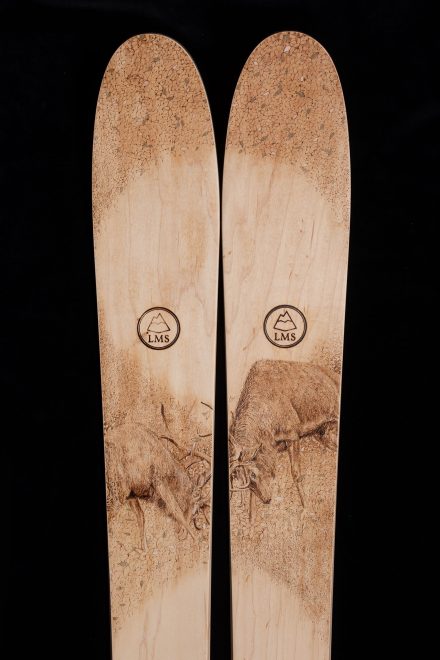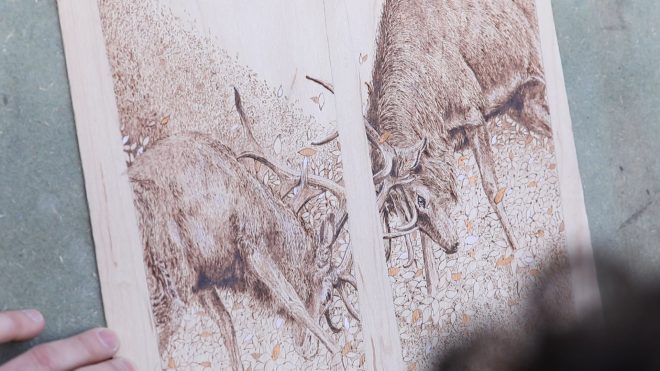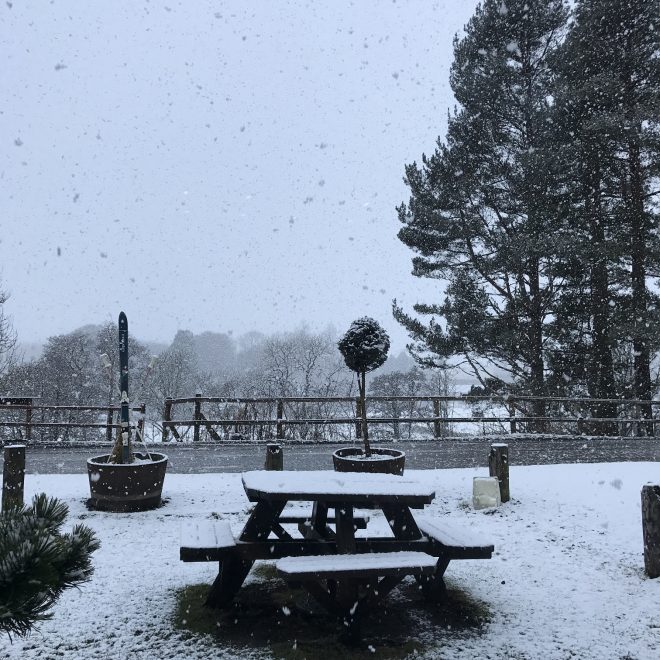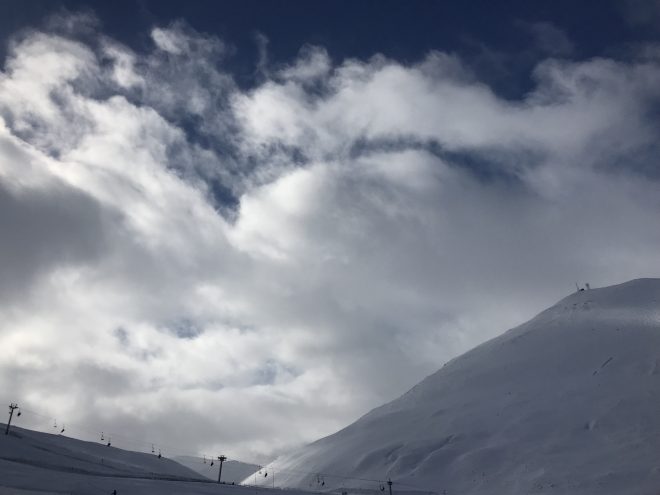As I approached the Lonely Mountain Skis workshop in Birnam Industrial Estate on an October morning last year, it was difficult not to be struck by the view. Ski maker Jamie Kunka looks out from his workbench onto a panoramic treescape, which on that day was glowing in autumnal hues. This is a maker who works in wood, who is led by principles of sustainability, and whose skill is rooted in a deep appreciation for Scotland’s hills.

I was in Birnam to see Jamie as part of National Museums Scotland’s contemporary collecting programme, which looks at how landscapes impact on the things we make and buy today, in an era of environmental change. For its size, Scotland is one of the most geologically diverse countries in the world. As such, it has a hugely varied natural landscape that has shaped our history and culture for many centuries.
We have collected Jamie’s award-winning Sneachda skis as an example of how the Scottish landscape continues to shape craft skill and design. They are made to work across different types of terrain – a response to the emergence of a vibrant backcountry skiing scene in Scotland, with people sharing information online about conditions across different areas. Yet that scene has emerged against the backdrop of the unreliability of snow as a result of our changing climate.


The skis Jamie has made for the National Collections carries an intricate pyrography engraving of rutting stags by artist Eben Cavanagh Rautenbach. The antlers are cut across the two skis, mimicking the animals’ battle as the skier moves through the landscape. We have also collected the first pair of wooden skis Jamie ever made, and tested at Glenshee Ski Resort, along with a well-thumbed book that has provided inspiration and technical guidance. The ISPO award trophy Jamie received for the Sneachda skis in 2017 completes the group. Together, these objects trace the skis from idea through the development of making processes to recognition on the international stage.
Collecting the contemporary makes it possible to explore objects in their context. So, six months after my first visit, I went back to the Lonely Mountain Skis workshop with Edinburgh Film Company. Jamie took us through his making process, showing us each stage and talking to us about the different materials and skills involved. We then headed north, in the hope of filming the skis in action on the hill the following day.
I woke to see huge snowflakes falling over the village of Kirkmichael. Pretty, yes, but not great for filming. By the time we arrived at Glenshee the conditions were poor, with limited visibility and a brutally cold wind. There were reports of an avalanche on a nearby hill, striking fear into the heart of this non-skier.


By the time we got to the top of the hill it was all stillness and blue skies. We spent the day chasing Jamie around on a skimobile. It was busy on the slopes – what seemed like hoards of tiny children descended at speed, whooping and throwing their arms in the air (again, utterly terrifying for someone who can barely coordinate her limbs to create a snow angel). Staff marvelled at the perfect conditions (not so much at my snow angel), saying they were some of the best they’d seen that season.

But while 2018 has been a good year for snow, there is a precariousness to Scotland’s ski industry that cannot be ignored. Snow-making machines were introduced at CairnGorm Mountain last year, after years of poor or unreliable conditions. Economies and communities in and around the hills, such as throughout the Cairngorms region, rely on the snowsports industry. The effects of snowlessness are far reaching.
Contemporary collecting allow us to take a thoughtful approach to the many ways that climate change is materialised in the things around us. The impact of snowlessness on our landscapes, industries and cultures can – and should – be documented in objects and preserved in the National Collections. The skis represent connections between the Scottish landscape and craft skill in an era of concerns around human impact on the world around us.

You can find out more about our contemporary collecting programme, Collecting the Present, at www.nms.ac.uk/collectingthepresent
In this film from our Collecting the Present series, Jamie Kunka reveals the ideas and processes behind crafting wooden skis in his workshop in Birnam, Perthshire.
